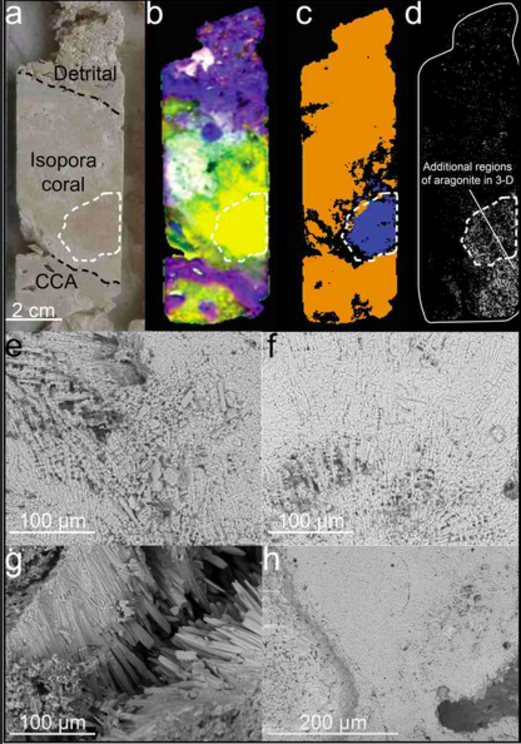Neutrons reveal how reefs responded to past climate changes
Researchers in Australia have pioneered a new method to study fossilised coral which will improve scientists’ ability to reconstruct how reefs and oceans responded to changes in Earth’s climate thousands of years ago.
Hard corals, which form the architecture of reefs, build their skeletons from a form of calcium carbonate called aragonite. The mineral’s structure incorporates traces of elements and isotopes which provide clues to the environmental conditions when the coral was growing.
“The aragonite retains the best signals of past ocean and climate conditions in coral that are available to us,” says Carra Williams, a PhD student in the University of Sydney’s Geocoastal Research Group who developed the new method.
But over time aragonite transforms into another structural form of calcium carbonate called calcite, which renders fossils unreliable for dating and reconstructing past climates.
Williams and the team have now shown that neutron computed tomography (NCT) can be used to map where pockets of aragonite survive within fossil corals, rather than having to cut them open.
Neutrons scatter when they hit hydrogen atoms, this makes them ideal for detecting aragonite which holds more hydrogen-containing water and organic matter than calcite.
In a new study, Williams and collaborators have shown that NCT can be used to create 3D maps of the mineral interior of a coral core. They revealed hidden aragonite zones within a 1,650-year-old fossil from Muschu Island in Papua New Guinea, a more than 40,000-year-old Late-Pleistocene sample from Ashmore Reef on the Northwest Shelf and a roughly 600,000-year-old Mid-Pleistocene sample from the Great Barrier Reef.
“This method opens the door to recovering climate information from coral samples once written off as too altered to be useful,” says Williams,
“By seeing inside the fossils in 3D, we can distinguish the original coral mineral, aragonite, from its altered form, calcite.
“Those rare sections of original aragonite allow us to extend and strengthen our records of how reefs and oceans responded to major environmental changes in the past. That context is critical for assessing how today’s reefs will cope with rapid warming and sea-level rise.”
The research has been published in the journal Geochemistry, Geophysics, Geosystems.

